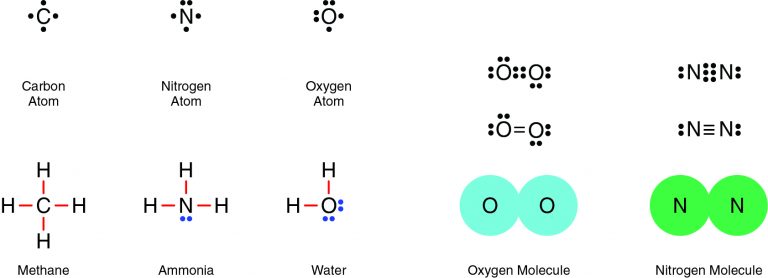What type of bond forms between nitrogen and oxygen, and why?
A. Ionic, because electrons are shared
B. Covalent, because electrons are shared
C. Ionic, because electrons are transferred
D. Covalent, because electrons are transferred
Nitrogen and oxygen are both nonmetals, which means they will share electrons in a covalent bond. For example, two oxygen atoms form a double bond, in which two pairs of electrons (four electrons total) are shared. Similarly, two nitrogen atoms form a molecule with a triple bond, in which three pairs of electrons (six electrons total) are shared.

Therefore, the Correct Answer is B.